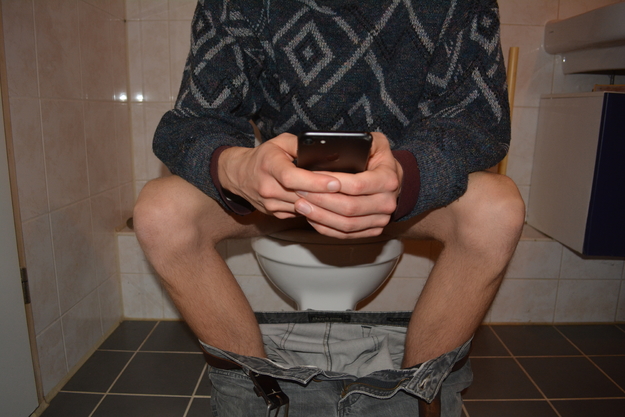When my upstairs neighbour flushes the toilet, my own apartment is filled with the sound of a small dam burst. My visitors tend to quickly look at the wall through which the water is crashing down, expecting to see a breach of some sort. I too had to get used to it; it startled and distracted me, this outdated construction of noisy drains and thin walls. It reminded me of the pile-up of small tenements that my fifties-flat actually is: an anthill of defecating, low-demanding tenants.
It feels old, even a bit ramshackle, a flat that badly conceals its infrastructures. More modern buildings do a better job at keeping their skeleton invisible and quiet. Through new knowledge and materials, technology has been able to conceal itself more and more through the years, inside walls or underneath the surface - but also under bonnets, inside laptops or wireless ‘in the air’. A technological concealment of technology, if you will. The humming of generators, the buzzing of air conditioning; sounds we have come to associate with big and chaotic third-world-cities, where internet- and telephone-cables are bundled together above the street and on roofs. These scenes don’t bother us any more in our own ‘modern’ and ‘orderly’ cities - only in some hip bars or shops, where pipes and tubes are deliberately left or made visible.
Coming back to my flushing upstairs neighbour: the sewage system forms an early and grand-scale example of this technological concealment of technology. From around 1850 onward, cities started to cover or remove the canals and gutters that served as sewers, and the carts that collected the excrements at households disappeared. Big cities started placing their sewage infrastructure underground, followed in the twentieth century by most smaller cities and towns. Poo and pee was distanced from the eyes and the nose, just like the technology that made this possible. In other words: the ‘modern’ urban experience, from which our excrements are almost completely eradicated, was made possible by a technological infrastructure that wasn’t part of this modern experience either.
There was, however, one part of this infrastructure of poo that couldn’t be completely concealed: the water closet. Of all the tasks that technology could take over, defecating wasn’t one; the transition from the digestion to the sewer remains a bodily practice. What technology could do was the careful conditioning of this ‘dangerous’ stage: bathrooms are brightly lit and mostly white, so that dirt can immediately be traced - to be easily wiped off the smooth surface of the ceramic. This way, the still bodily stage of the infrastructure is brought under control; as long as there isn’t any dirt visible, one can safely and hygienically relieve oneself.
These examples show that technological interventions in the home and the city, apart from being practical, shape the way we perceive these spaces. The way technology presents itself is a constant play of visibility and invisibility, of audibility and inaudibility, of smell and its absence. It forms both our physical environment and our perception of this environment - while at the same time hiding itself more and more from that same perception. Hearing the drains in my apartment has become something ‘old-fashioned’, ‘from another era’, when technology was still more perceivable in the household.
The sewage system is just one of many examples of this technological play of perception, an early stage in a bigger development that’s visible in the modern machines and gadgets that we use every day. In the twenty-first century, cars already feel less like the heavy, polluting machine they actually are: inside, the motor is hardly audible or smellable, while the driving experience is shaped by power brakes, seat heating and a board computer. The technological operation of smartphones is even harder to imagine; everything is made to provide the user with a frictionless experience, to give access to a world where cables and chips don’t exist. Nice, this distraction, when you’re on the toilet.
Bibliography
Corbin, Alain, Pestdamp en bloesemgeur. Een geschiedenis van de reuk (Nijmegen 1986).
Corbin, Alain, Time, desire and horror. Towards a history of the senses (Cambridge 1995).
Latour, Bruno, We have never been modern (Cambridge 1993).
Lintsen, Harry, Wat is techniek? Een geschiedenis van menselijke secreten en discrete technieken (Eindhoven 1992).
Otter, Chris, The Victorian eye. A political history of light and vision in Britain, 1800-1910 (Chicago 2008).
